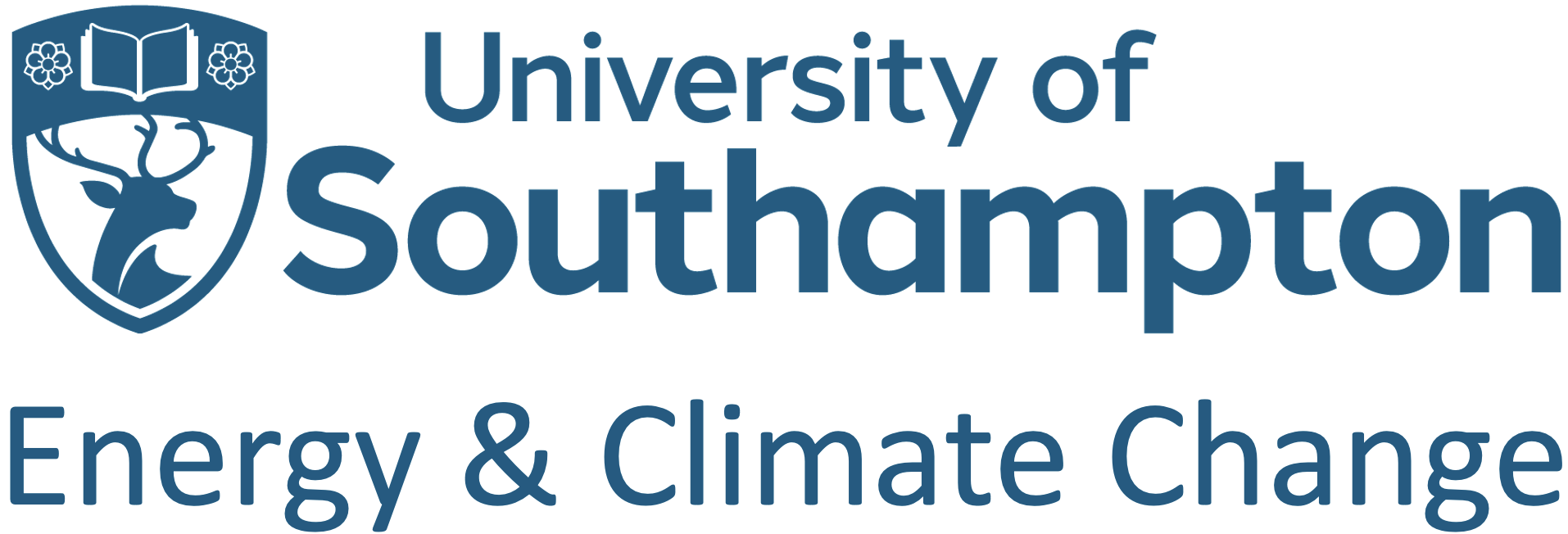
Bird’s eye view of the trading centre, solar PV canopy and the water tank. Two containers underneath the canopy hold the batteries and the system’s switch gear and protection. One of the containers is used as the Cooperative office.
The University of Southampton represented by the Sustainable Energy Research Group (SERG), within the Faculty of Engineering and the Environment is leading an exemplar international project to provide sustainable electricity supply to rural communities in Africa. The aim of the project is to establish and implement replicable, off-grid electricity generation that promotes development in rural communities in sub-Saharan Africa. The 5 year project “Replication of Rural Decentralised off-grid Electricity Generation through Technology and Business Innovation”, termed Energy for Development (E4D) for short, is a multi-institutional research programme, funded by the Research Councils UK and the UK’s Government’s Department of International Development. The research encompasses social, technical, economic and cultural knowledge generation and understanding specific needs to allow replication of such projects in rural communities across the world. The approach established by the E4D team is holistic, incorporating community and government participation as well as multidisciplinary researchers.
Community Led Initiative

Stephen who opened a shop in the trading centre about a year ago, stated to Prof Bahaj that his weekly income from only his mobile phone charging is about 3 times what he pays for electricity. Establishing these vibrant key tenants and local entrepreneurship are key to the success of such projects.
The principle of E4D is to develop a community based mini-grid solar electrification system aimed at invigorating village trading centres (TC) by providing electricity directly to businesses, who in turn provided charging for electrical appliances such as LED lanterns for lighting and for mobile phones. The core of the project is based on a solar photovoltaic (PV) and storage system coupled to a minigrid. The latter provides power to all TC buildings (shops, cafes, schools, health centres, churches etc.) and the connected businesses. As well as utilising power, the businesses also provide energy services (electrical charging etc.) to the rest of the community. This is the concept of the Kitonyoni village market solar project established in 2012 in Makueni County, Kenya. Such a concept displaces the use of candles or kerosene used for lighting within community households and businesses, which is expensive and has negative health effects.
Sustainable Approach
The E4D team worked closely with the villagers to determine their needs, aspirations and goals with respect to electrification. E4D’s have established an economically sustainable approach, whereby the community contributes to the project and is responsible for the operation and maintenance of the plant. Income is generated for the cooperative, also set-up as an energy supply company (ESCO), through membership fees, local sales of electricity and share ownership. Such income covers all the running costs of the project, provides finances to the community as well contributing to the recovery of the capital cost of the project. Together, E4D engineers, local contractors and villagers were able to assemble the containerised 13.5 kWp photovoltaic solar plant and the minigrid within one week. The premise of the modular project design is to make it easier to replicate and resize to suit villages of different size and requirements.
Professor AbuBakr Bahaj, head of SERG and the Principal Investigator on the £2.6 million project, comments: “we estimate up to 3000 local people can now benefit from electrical energy provided by the project. The school, health centre, churches and the 40 businesses have round-the-clock stable electricity, allowing them to extend the working hours and provide additional services such as information technology training, tailoring, hair dressing as well as the charging facilities mentioned earlier. Additionally, the solar canopy of the PV system was designed to act as a rain collector, enabling water storage and sale by the cooperative to the community throughout the year”.
One Year on…
This month, the E4D team celebrates the first year of operation of the project which has undoubtedly transformed the trading centre, the lives of the villagers and has provided the research team a full year of data to appraise system performance, energy demand and relate to overall project replication. The project is now a beacon in Africa having many local and international visitors such as from Japan, Germany, UK, Zambia, the World Bank and other funding agencies.
In relation to the first year operation, Prof Bahaj comments: “the transformation of trading centre is very clear, land prices have more than doubled, at least 5 new buildings have been completed, new businesses started, businesses’ income has in most cases more than doubled and most importantly, a new donated maternity ward has been electrified and is now operational. The challenge now is to reduce capital costs and embed the concepts and models in replication projects. The latter is now being done in a second project in Kenya, another in Cameroon with other projects being planned in Mozambique and other African states. There is now strong interest from governments and the private sector to adopt our approach as well as from international funding agencies to provide substantial funding to support the concept at scale”.
1. The project is a consortium comprises the (a) University of Southampton’s Sustainable Energy Research Group (www.energy.soton.ac.uk) Faculty of Engineering and the Environments and the Centre for Global Health Population Poverty and Policy (www.soton.ac.uk/ghp3) within the Faculty of Social and Human Sciences, (b) Business School (http://www3.imperial.ac.uk/business-school) at Imperial College, London, and (c) core industrial partners IT Power Ltd and GVEP International. More details about the project and the partners can be found at: www.energy.soton.ac.uk and www.energyfordevelopment.net
